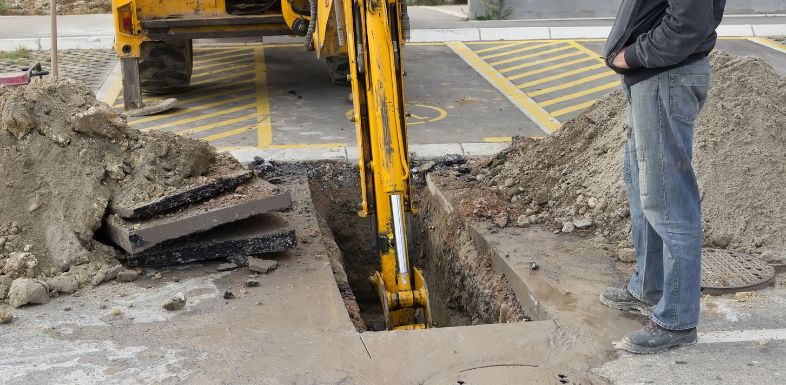Cross Bores: What They Are and How To Prevent Them

You’ve probably heard of the term cross bore before, but what does it mean? Here, we explain what cross bores are, their dangers, and how to prevent them.
June 24, 2025: Infrastructure plays an essential role in our daily lives, ensuring that everything from electricity to water flows seamlessly. But beneath the ground, hidden threats such as cross bores can jeopardize public safety and cause serious disruptions.
Utility maintenance personnel and engineers must understand what cross bores are and how to prevent them. Below, we delve into the world of cross bores, including the dangers they present and the methods available to prevent them.
Defining Cross Bores: An In-Depth Look
A cross bore is a dangerous intersection of underground utilities, typically occurring when one pipeline or conduit is unintentionally installed through another existing utility line. For example, if someone drills a gas pipe through a sewer line, the result is a cross bore. These intersections typically occur due to the limited visibility of underground infrastructure during construction.
Cross bores become particularly concerning because they are not immediately noticeable. Without resolution, they can cause significant risks later when maintenance personnel or engineers service or repair one of the lines.
The Dangers of Cross Bores
Cross bores pose a serious threat to public safety, property, and the environment. One of the biggest dangers arises when gas lines intersect sewer pipes. If an unsuspecting plumber uses mechanical equipment to clear a clogged sewer line, they can inadvertently puncture the gas pipe, leaking flammable gas into buildings and increasing the risk of explosions or fires.
Cross bores can also cause expensive infrastructure damage. Repairing cross bores and addressing the resulting issues requires extensive excavation, utility downtime, and costly rebuilds. The financial and logistical impact of such disruptions can cause trouble for municipalities, utility providers, and property owners alike.
Methods for Preventing Cross Bores
Now we know what cross bores are, but how do we prevent them? Cross bore inspections before any construction or excavation are extremely important to the safety of workers and the efficiency of the project. One of the main main things to know about cross bore inspections is that there are multiple effective methods, from video camera inspections to robotic systems.
Communication between contractors and utility providers is also essential to preventing cross bore accidents. Collaborative planning minimizes the risk of errors and allows organizations to account for unforeseen challenges. Implementing non-invasive inspection techniques like camera systems and vacuum excavation can help identify potential risks during the planning phase and ensure worker safety.
Technology and Cross Bore Prevention
Technology plays a critical role in cross bore prevention by offering advanced tools and systems that improve underground visibility. Utility detection devices such as ground-penetrating radar (GPR) and GPS-based mapping tools provide precise visualizations of underground infrastructure. These tools greatly reduce the uncertainty that previously caused accidental intersections.
Another cutting-edge advancement involves sewer camera inspections, which use robotic cameras to examine existing sewer lines for potential cross bores before drilling begins. These inspections allow teams to detect and mitigate risks in real-time, proactively preventing intersections.
Ensuring Safety and Preventing Cross Bores
Preventing cross bores is about protecting infrastructure, safeguarding lives, reducing disruption, and fostering trust between utility providers and the communities they serve. By leveraging solid planning, state-of-the-art technology, and adherence to regulatory standards, utilities and contractors can minimize the risks associated with cross bores.
